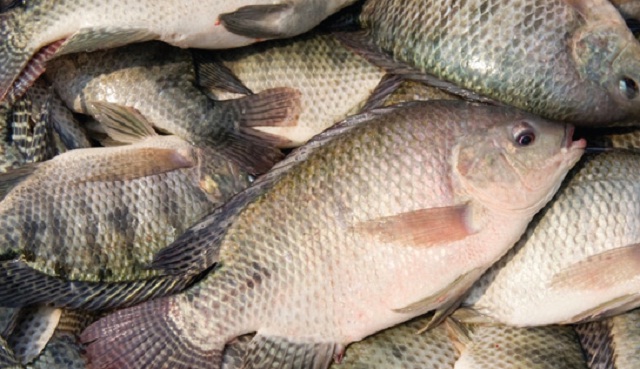
“I wish the military could continue staying on the lake because those fishermen who failed to meet the requirements are no longer fishing,” said Bosco Kalunga, a UPDF representative at Kasenyi Fish Landing Site, who has been in the fishing business for the past two decades.
He said while there are high fish volumes in the lake, the majority of fishermen do not have the required fishing gear and lack capital to invest in acquiring acceptable sizes of nets and boats.
The recovery trend appears to be similar in Tanzania and Kenya.
In neighbouring Tanzania, Mara Regional Commissioner Charles Mlingwa, in May 2017 told fish processors who had suspended operations in the region due to lack of fish that there was no longer need for factories to remain closed, as fish stocks had increased in the lake as a result of increased patrols on Lake Victoria.
Over the past three years, two fish processing firms, Prime Catch Export Limited and Mara Fish Limited suspended operations, while Musoma Fish Processors was said to have reduced production volumes.
But not all sections of the population is contented with the UPDF operations on Lake Victoria. For instance in Masaka, residents of Mumpu and Mutante landing sites in Buwunga Sub-Country have been up in arms over the UPDF’s plan to evict them.
UPDF has always claimed that the two landing sites are not gazetted. Masaka District LC V Chairperson, Jude Mbabaali told Daily Monitor last June that the protection unit’s plan to evict the residents, numbering over 1,000 , at the landing sites has no legal basis.
Further, majority of the fishermen in the area have abandoned fishing as they are unable to acquire the specified fishing gears, said Francis Kimuli, the chairperson of Buwunga Sub-County.
“The legal fishing gears are expensive and our local fishermen cannot afford them, but if the government supports them, it will be one way of fighting the vice and helping them earn a living,” he said.
Fisheries sub-sector contributes 3% of Uganda’s national Gross Domestic Product and 12% to agricultural GDP, according to the agriculture ministry.
It also employs up to 1.2 million people directly and over 3.5 million people indirectly. Fish accounts for over 50% of animal protein in food, with each Ugandan consuming an average 8 kg of fish per year.
Going forward
Despite the apparent success, it remains unclear if and how government plans to maintain UPDF’s deployment on Lake Victoria. It also remains unclear on how much the government is spending to maintain the momentum of fighting illegal fishing.
Kayanda says the target biomass should be 1.4 million tonnes with optimal catch of 264,000 tonnes but to reach this level, there’s need to reduce the current catch to 223,000 tonnes and then climb slowly to optimal catch.
“There’s need to reduce the amount of immature Nile Perch caught from 40% currently to 20%, by developing and implementing a regional strategy to prevent trading in immature fish,” he said.
He said there was also need to completely eradicate small hooks from the lake, establish and gazette new closed areas where no fishing is permitted and strengthen enforcement of compliance to fisheries regulations.
“Affirmative action to eradicate illegal trade of undersized, immature Nile perch to neighbouring regional markets should be taken,” he said, adding that fishing gears that disrupt or damage nests should also be regulated.
Rukuunya said government had revised the National Fisheries Policy of 2004 into the National Fisheries and Aquaculture Policy, which is currently before cabinet for approval, with a vision of seeing a modern, productive, profitable and sustainable fisheries and aquaculture sector.
He said the government is also promoting aquaculture in a bid to reduce pressure on the Lake.
“So far aquaculture is doing very well; growing at an average of 8% per annum,” he said, adding that the production is estimated to have increased from 5,000 metric tonnes in 2004 to over 100,000 tonnes in 2014.
He said the government’s target is to increase production from aquaculture to 300,000 metric tonnes by 2020.
Vincent Ssempijja, the agriculture minister, said earlier this year that the government will revive the fisheries sub sector using a number of measures – ranging from reforming the fisheries management and directorate, procurement and issuance of fishing vessel identification number plates, registration of all boats and the recruitment of 10 fisheries inspectors at every border post to curb illegal fishing and trade.
Fish Export Volumes
| Year | 2000 | 2002 | 2004 | 2006 | 2008 | 2010 | 2012 | 2014 | 2016 |
| Volume (Tonnes) | 15,876 | 25,169 | 30,057 | 32,855 | 23,430 | 23,967 | 20,562 | 17,597 | 16,168 |
| Value (US$ million) | 34.4 | 87.6 | 102.9 | 136.9 | 115.3 | 119.6 | 115.5 | 134.9 | 113.0 |
****
This article was funded by a grant from the African Centre for Media Excellence.
 The Independent Uganda: You get the Truth we Pay the Price
The Independent Uganda: You get the Truth we Pay the Price



